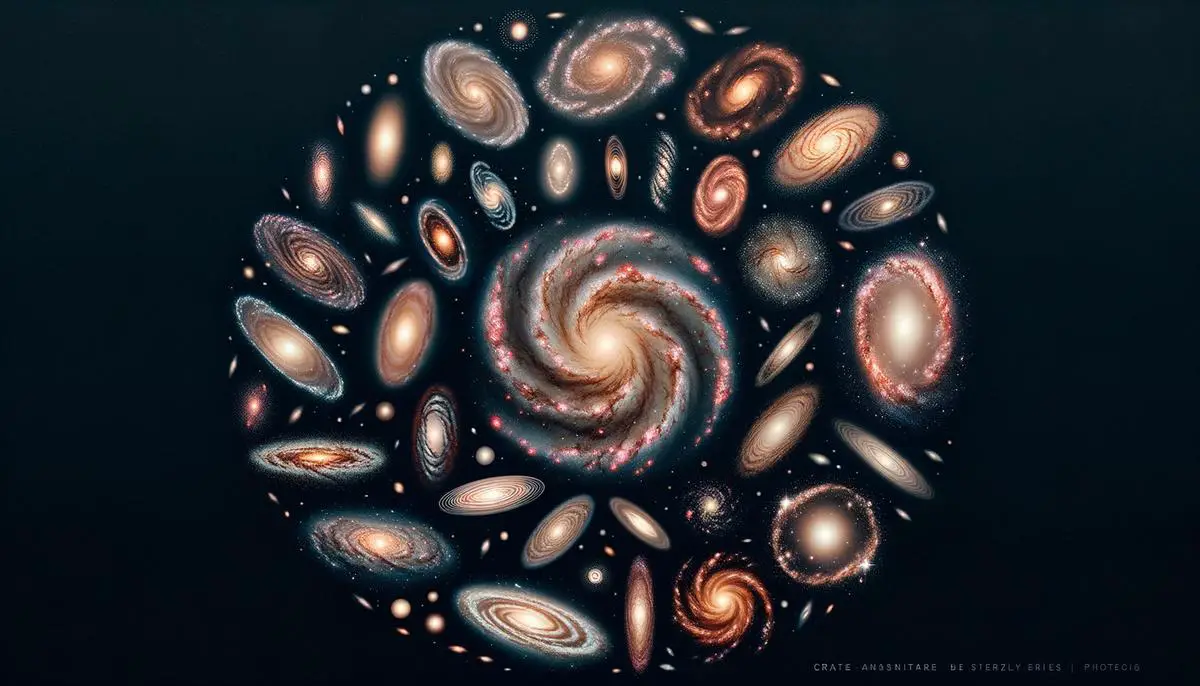Galaxy Size Distribution
The Sloan Digital Sky Survey (SDSS) has revealed approximately 140,000 galaxies in various shapes and sizes. Late-type galaxies, such as spirals, have a characteristic brightness of M_r,0 ≈ -20.5, corresponding to a stellar mass of about 1010.6 solar masses. Less massive galaxies exhibit greater brightness variability (about 0.5) compared to more massive ones (about 0.3).
Early-type galaxies show a steeper relationship between size and brightness, with dispersions similar to bright late-type galaxies. Faint red early-type galaxies maintain consistent sizes regardless of luminosity.
For late-type galaxies, star formation follows the standard feedback model. Smaller, brighter galaxies suggest bulge material redistributing into disks. Early-type galaxies, however, are unlikely to form through single big mergers. Instead, they likely result from repeated events, aligning with characteristics seen in faint ellipticals or Lyman break galaxies.
While the universe is 13.8 billion years old, its observable radius extends to 46 billion light-years due to cosmic expansion. Galaxy sizes vary considerably, from dwarf ellipticals to giant spirals spanning up to 50 kpcs, and giant ellipticals reaching diameters of 200 kpcs.
Measuring a galaxy's luminosity involves capturing its total light output. The mass-to-light ratio is a key metric for astronomers, showing consistency within galaxy types despite individual variations.
The circumgalactic medium (CGM), a gaseous halo extending far beyond visible starlight, plays a crucial role in defining galaxy size and facilitating gas cycling between galaxies.
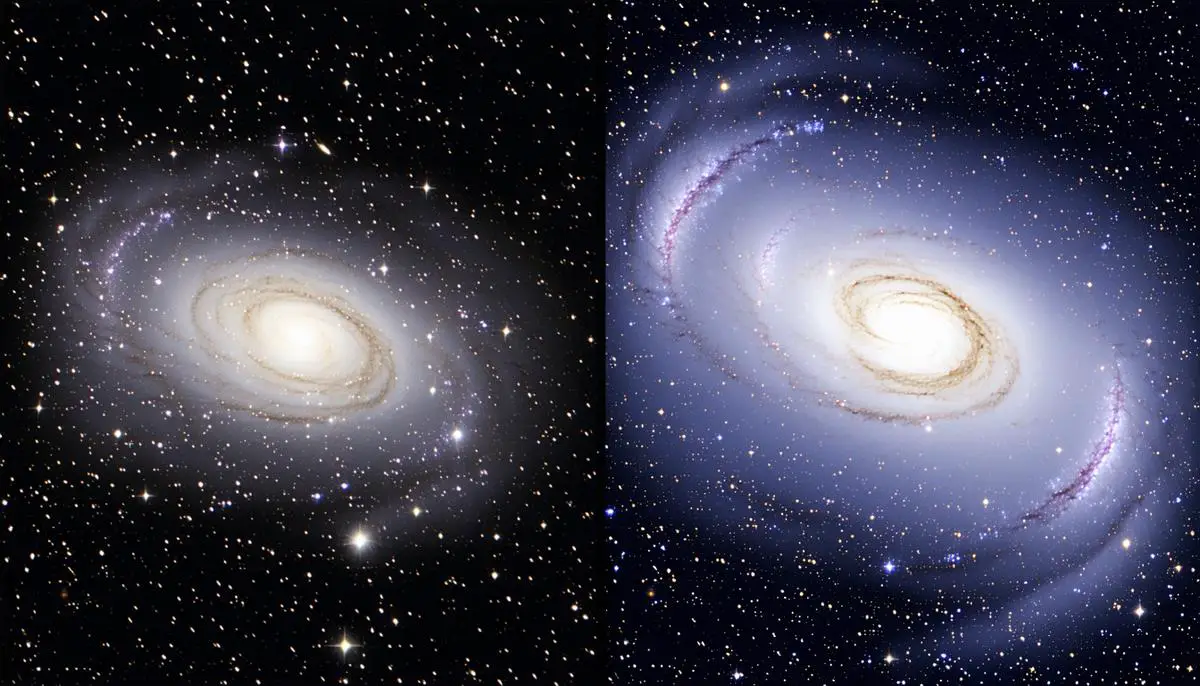
Measuring Galaxy Size and Luminosity
Measuring galaxy size and luminosity presents unique challenges due to their distant nature and gradual fading into the background. Astronomers use large apertures to capture as much light as possible, including faint edges.
To determine radial size, mathematical models calculate where half of the captured light lies. This method consistently defines a galaxy's diameter as the span enclosing half of its total luminosity.
Luminosity measurement employs two main strategies:
- Using a large aperture to capture all light
- Modeling the predictable decline of light from the galaxy's center
These approaches help characterize the galaxy's stellar population and overall brightness distribution.
The mass-to-luminosity ratio, linking a galaxy's brightness to its mass, provides insight into the amount of stellar material within galactic boundaries. This relationship varies among galaxies of the same type, reflecting their unique characteristics.
Through these sophisticated observation and analysis techniques, astronomers gain a deeper understanding of galaxy structure and composition without leaving Earth.
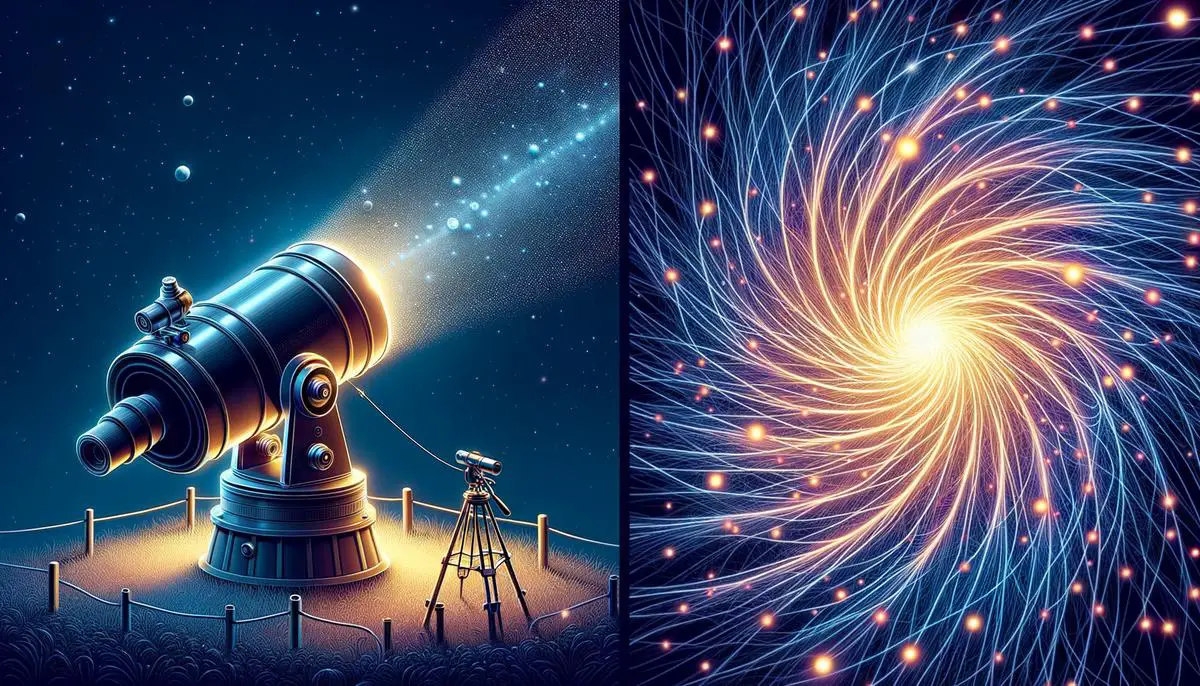
Role of Gas in Galaxy Size
The circumgalactic medium (CGM), an expansive gas halo surrounding galaxies, plays a crucial role in defining galaxy size and influencing galactic evolution. Recent research, particularly on the starburst galaxy IRAS 08339+6517, has revealed that the CGM extends far beyond the visible boundaries of galaxies.
The CGM actively interacts with the intergalactic medium (IGM), forming a critical boundary for cosmic inflows and outflows. This interaction zone provides insights into how galaxies influence their surroundings and how the cosmic environment affects galactic development.
Advanced technology, such as the Keck Cosmic Web Imager, has improved our ability to observe the CGM. These observations show that the processes heating the CGM differ significantly from those within the galaxy's disk. The CGM's boundary, now more clearly defined, helps redefine our understanding of where a galaxy truly ends.
By studying the relationship between star-forming activity and the CGM, researchers can better understand the cycles of gas flow into and out of galaxies. This intricate process showcases how galaxies grow, change, and interact within the cosmic web, highlighting their connections to the broader universe.
Galaxy Evolution and Size
Galaxy evolution is a dynamic process influenced by various factors, including gas flows and interactions with neighboring galaxies. The influx of gas from the intergalactic medium or cosmic web fuels star formation and alters galactic structures, while outflows driven by stellar feedback carry energy and enriched elements back into space.
These inflows and outflows create a delicate balance between new star formation and the maintenance of galactic infrastructure. Interactions with neighboring galaxies can amplify these processes, triggering starbursts, enhancing gas accretion, or stripping galaxies of their gas through tidal forces.
The circumgalactic medium plays a crucial role in this evolution, acting as a bridge between galaxies and their environment. It orchestrates the balance of inflows and outflows, ensuring galaxies remain distinct entities while continuously evolving.
Understanding these processes provides insight into how galaxies grow and change over time, revealing the intricate relationship between galactic size, structure, and the cosmic environment in which they reside.
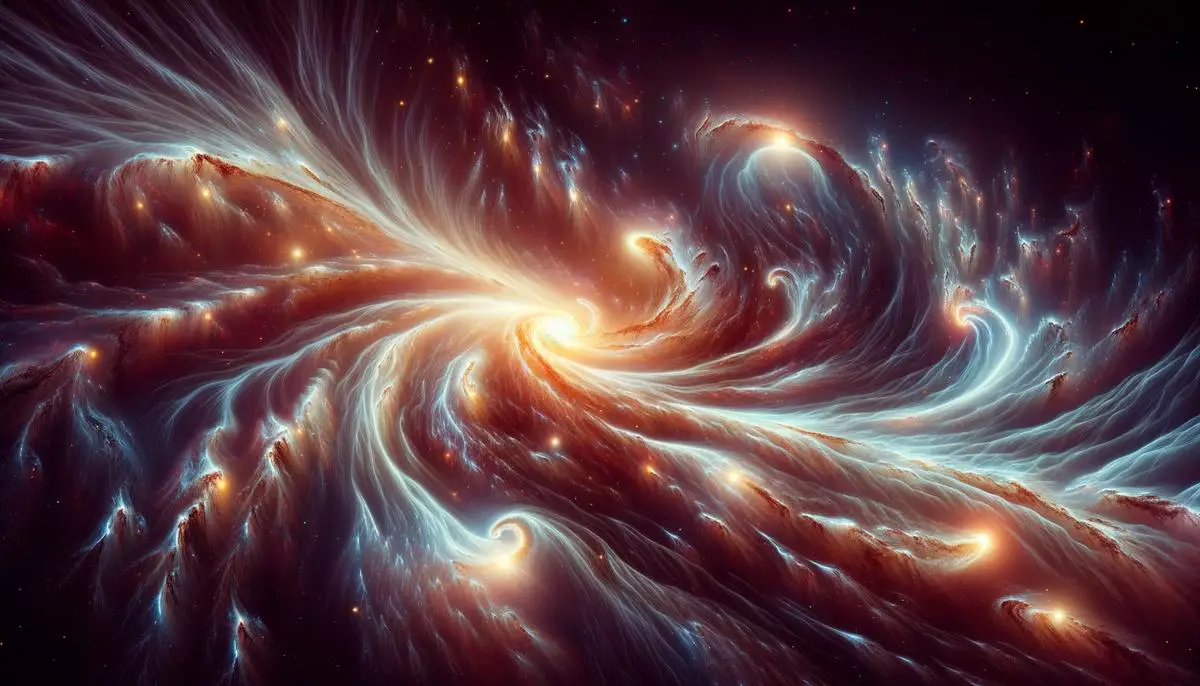
Cosmic Expansion and Perceived Galaxy Size
The expansion of the universe significantly impacts our perception of galaxy sizes and distances. As space-time expands, galaxies appear to recede from us, their velocities proportional to their distances—a phenomenon known as Hubble's Law.
This cosmic expansion stretches the light from distant galaxies to longer, red-shifted wavelengths, providing information about their speed and distance. However, it also creates a cosmic illusion: when we observe a galaxy, we see its past state, as the universe has continued to expand while the light traveled to reach us.
As a result, the current radius of the observable universe is approximately 46 billion light-years, far exceeding its age of 13.8 billion years. This discrepancy arises from the ongoing expansion of space-time rather than from a miscalculation.
The expansion of the universe creates a dynamic cosmic landscape where the dimensions and distances of celestial structures are influenced by the very fabric of space-time. This phenomenon challenges our understanding of galaxy sizes and distances, reminding us that our observations are part of an ever-evolving cosmic narrative.
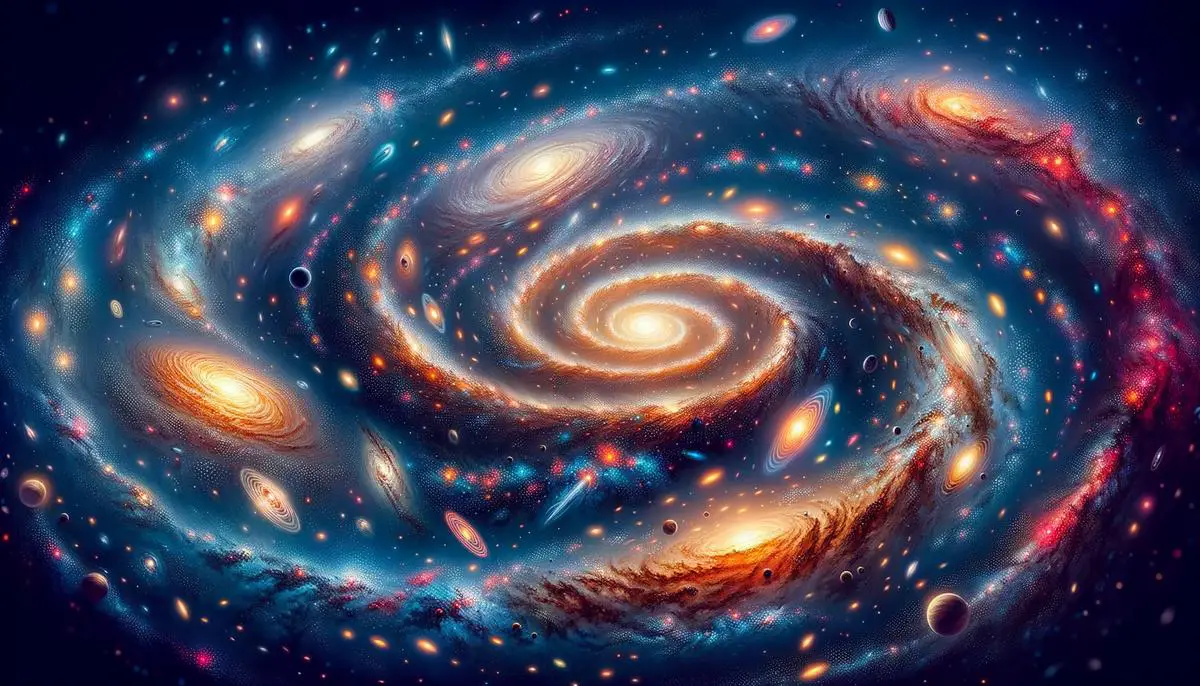
As we study the cosmos, we observe galaxies as dynamic entities contributing to the expanding universe. This vast cosmic canvas invites us to explore the intricate relationships between celestial bodies and the space-time fabric, deepening our understanding of the universe's structure and evolution.
- Shen S, Mo HK, White SD, et al. The size distribution of galaxies in the Sloan Digital Sky Survey. Mon Not R Astron Soc. 2003;343(3):978-994.
- Herrick-Gleason E. How can the visible universe be 46 billion light-years in radius when the universe is only 13.8 billion years old? Astronomy. 2024.
- Nielsen N, Pointon SK, Kacprzak GG, et al. An emission map of the disk-circumgalactic medium transition in starburst IRAS 08339+6517. Nat Astron. 2023.
![]()
